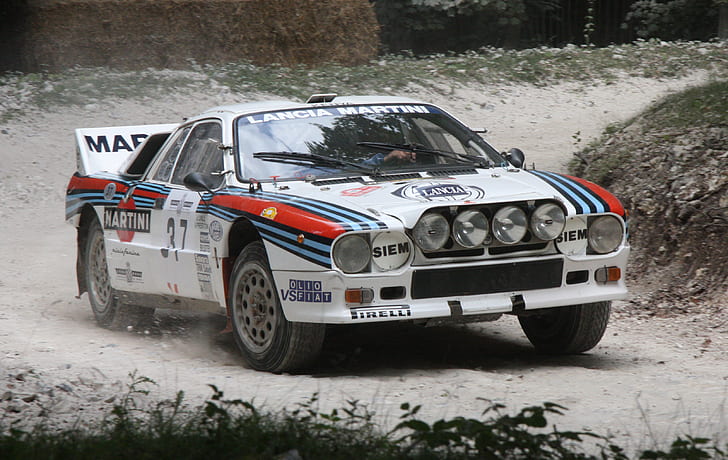
In the annals of motorsport history, few eras evoke as much awe and fascination as the Group B era of rallying, a brief but unforgettable period that revolutionized the sport and left an indelible mark on automotive technology. From 1982 to 1986, Group B rallying was a spectacle of raw power, innovation, and danger that captivated enthusiasts and casual observers alike. This article delves into the characteristics, thrills, and ultimately tragic demise of the Group B era.

The Group B era was characterized by its groundbreaking departure from traditional rallying norms. Unlike earlier categories, Group B imposed minimal restrictions on manufacturers, allowing them to create rally cars with unprecedented levels of power, lightweight constructions, and advanced technology. The results were machines that were not just fast, but mind-blowingly quick.

Group B cars were among the fastest-accelerating vehicles of their time. With powerful engines and lightweight chassis, they could sprint from 0 to 60 mph in mere seconds, challenging the very definition of speed. This era saw the advent of turbocharging, all-wheel-drive systems, and aerodynamic designs that pushed the boundaries of automotive engineering. Manufacturers used the rally stage as a proving ground for cutting-edge technologies that eventually trickled down to production vehicles. The relaxed regulations resulted in a diverse range of cars from various manufacturers, each with its own unique design philosophy and performance attributes. From the iconic Audi Quattro to the menacing Lancia Delta S4, Group B produced legendary vehicles that continue to captivate imaginations.

The allure of Group B rallying extended beyond the technical marvels of the cars themselves. The combination of power, speed, and unpredictability made for a spectacular show that attracted massive crowds and media attention. The roar of the engines, the screeching of tires, and the daring manoeuvres of drivers turned rallies into electrifying events.

However, the intoxicating excitement came at a grave cost. The lack of stringent safety regulations, coupled with the relentless pursuit of performance, led to a series of tragic accidents that shook the rallying world to its core. Spectators, drivers, and co-drivers lost their lives in horrific crashes that underscored the inherent dangers of pushing the limits.
The writing was on the wall: the exhilarating spectacle of Group B rallying was increasingly overshadowed by the grim toll of accidents. The 1986 Tour de Corse, which claimed the lives of Henri Toivonen and Sergio Cresto in a fiery crash, marked a turning point. The rallying community was forced to confront the glaring safety issues that had marred the era.
In response, the FIA introduced Group S regulations, aimed at curbing the excesses of Group B while maintaining high performance. Yet, before Group S could gain traction, the FIA made a momentous decision – the discontinuation of Group B rallying. The era of unrestrained power and peril came to an end, leaving a void that subsequent categories would struggle to fill.

The Group B era of rallying stands as a paradoxical legacy, a blend of astonishing technological advancements and tragic consequences. It redefined what was possible in motorsport and laid the groundwork for modern rally cars and even high-performance road cars. Yet, it also serves as a stark reminder of the need to balance innovation and safety.
Decades later, the echoes of Group B still reverberate through the world of motorsport. Enthusiasts remember the roaring engines, daring drivers, and heart-pounding moments that made the era legendary. But they also remember the lessons learned – that even in the pursuit of greatness, safety must never be compromised.

The Group B era of rallying remains an enigma, a chapter in motorsport history that blazed brightly with innovation, speed, and audacity, only to be extinguished by the tragic consequences of its excesses. It is a testament to the indomitable human spirit that seeks to push boundaries and conquer challenges, even in the face of daunting risks. Group B may have ended, but its legacy continues to fuel the imagination of those who dare to dream beyond limits.








